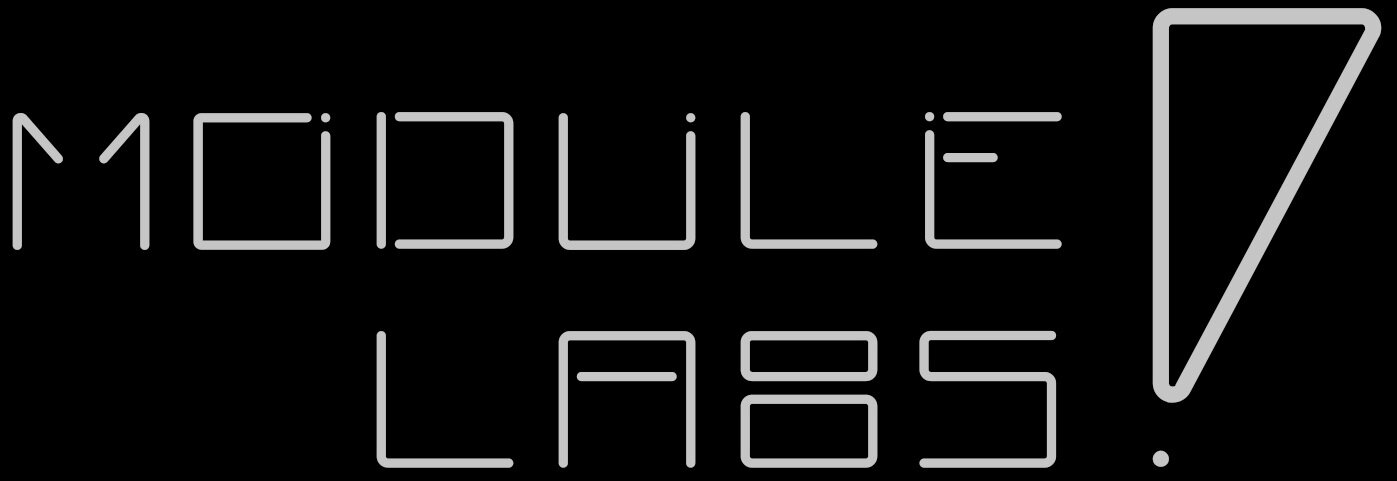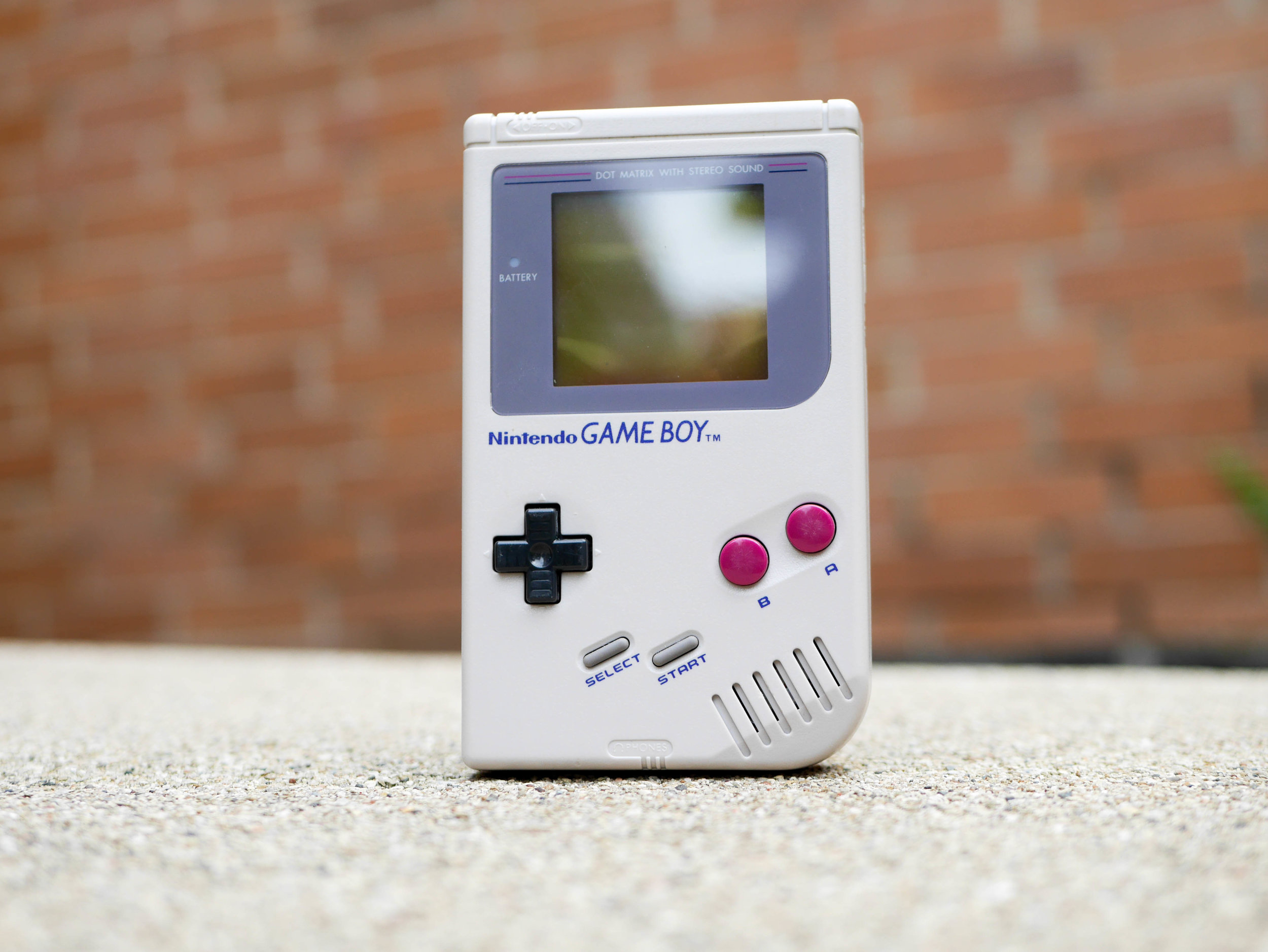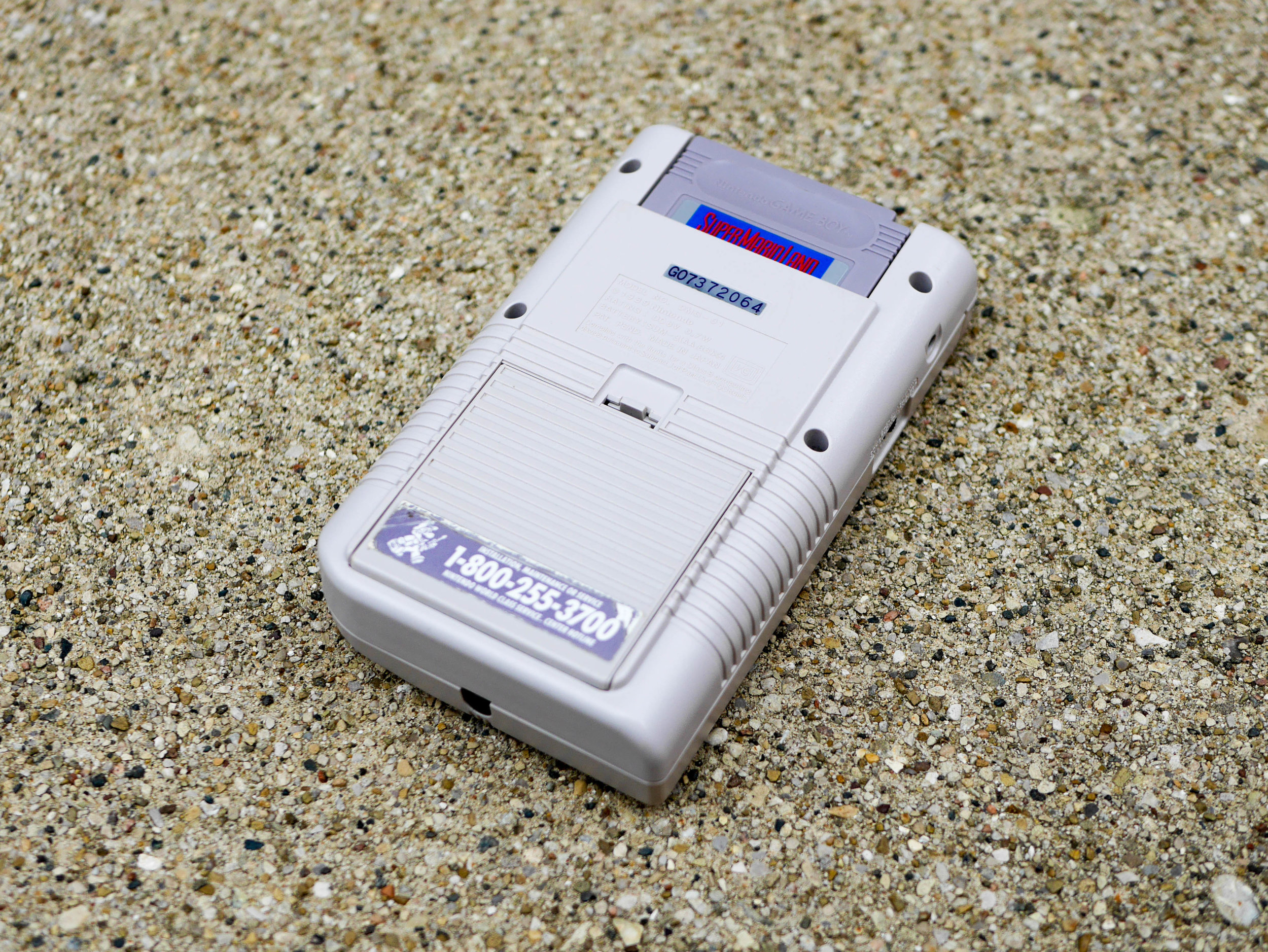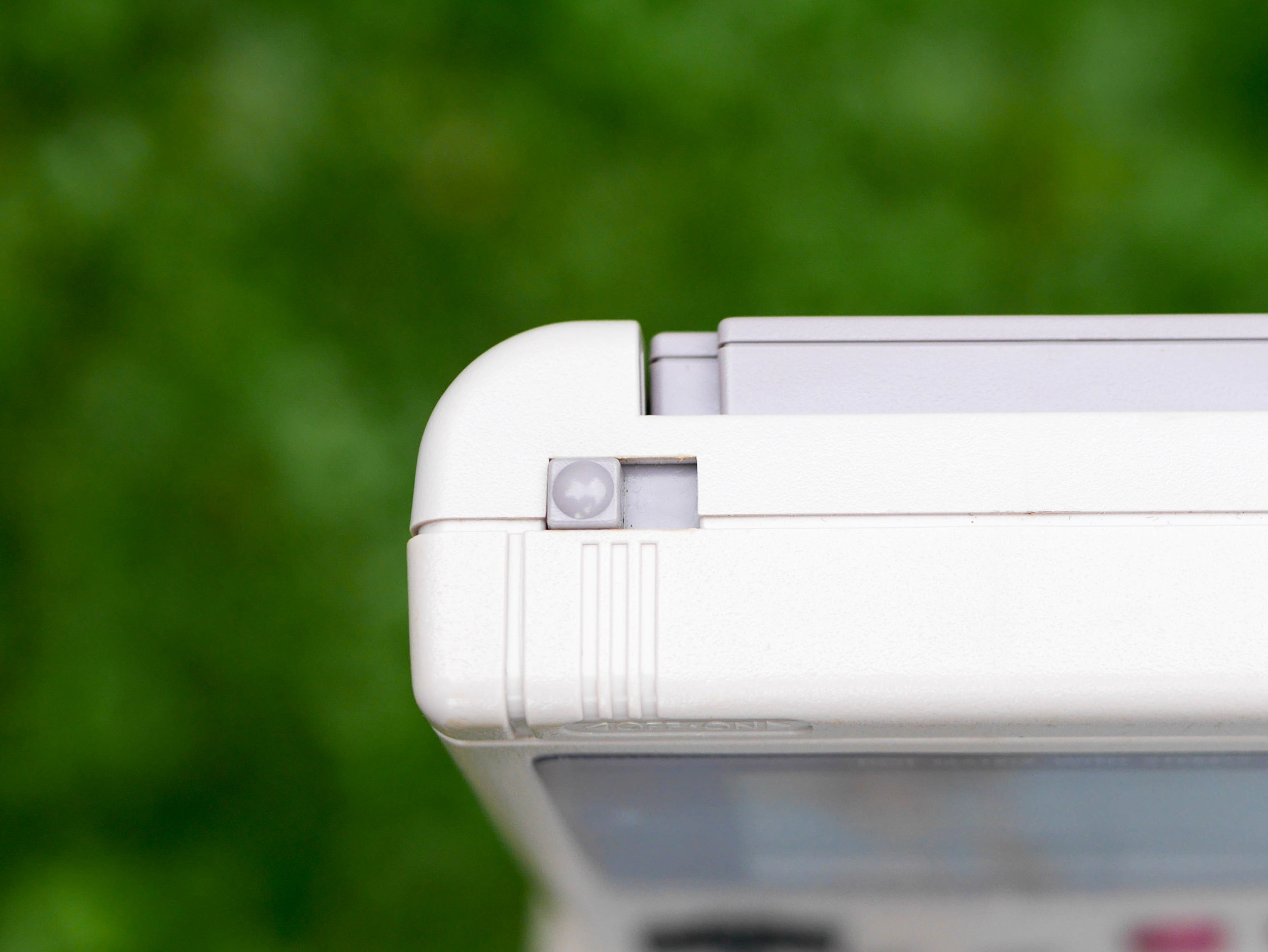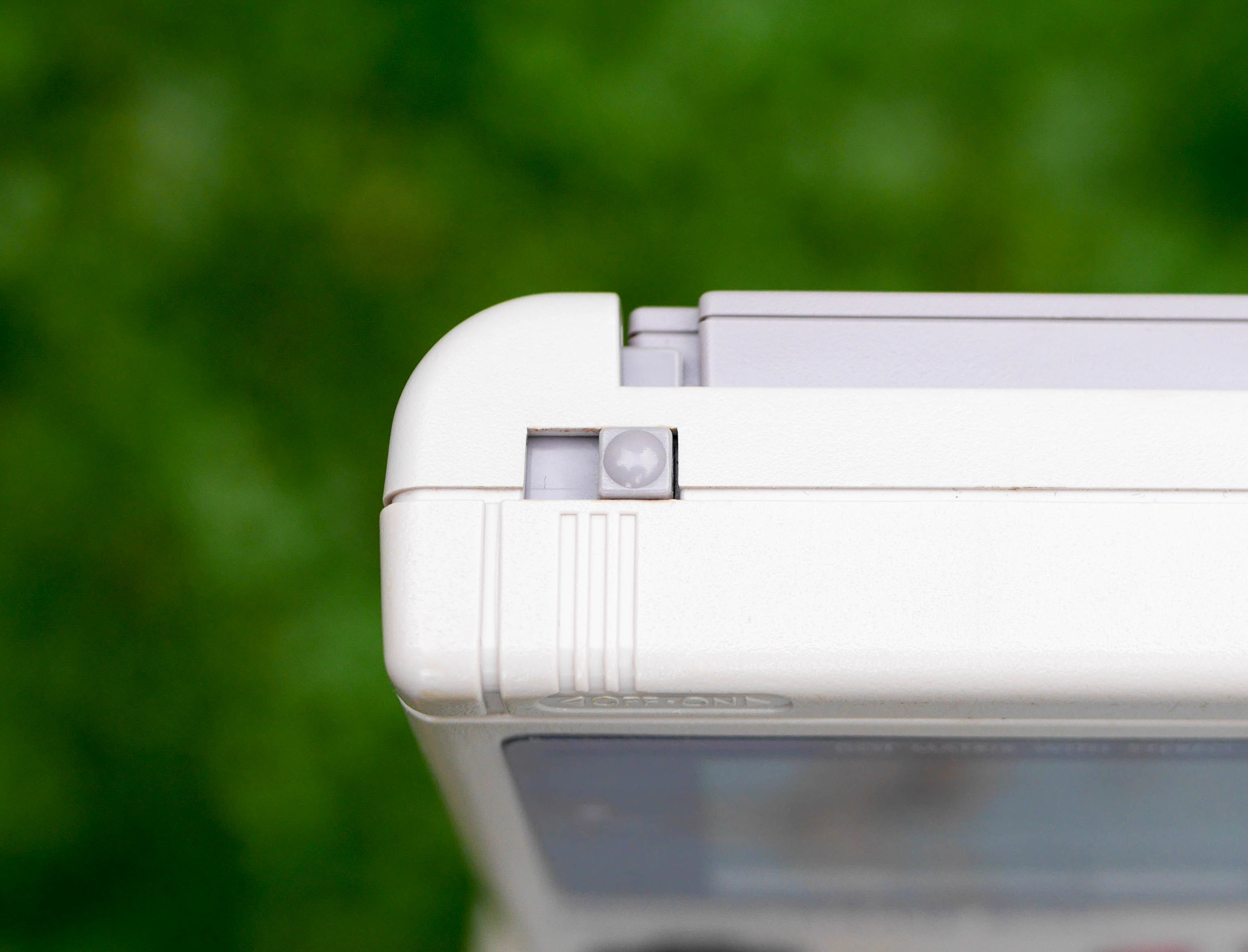Nintendo : Game Boy Model DMG-01
Review by Gerry Mayer
The first Game Boy, Model DMG-01 from Nintendo was released in 1989 and was Nintendo's first handheld multi-game system evolving from the Game and Watch handheld electronic games. The Game Boy featured some improvements over the Game and Watch handhelds mainly by offering a common, modular platform for different games by making use of both with swappable cartridge based games and a dot matrix screen instead of fixed image graphics. It's chunky build, bright colored buttons and green tinted screen are sure to bring you right back to 1989.
The case of the Game Boy is made of sturdy grey ABS plastic with hand friendly corners and filleted edges. The overall form is mostly plain but the angled and rounded area of the speaker grill gives some nice asymmetry and additional visual interest. It is easy to see that the case is made from two parts that have been injection molded as the part line has been emphasized and been made part of the styling where some aestetic part lines have been added to the top portion near the cartridge.
A lot of the styling of the case seems to be only aesthetic without a specific function, other then perhaps to make it hard to copy as easily for someone trying to counterfeit the case. One good example of this styling is the three slash detail above the stereo headphone jack. Perhaps they could be used to feel where the headphone port is, but with the large gaps towards the bottom of the headphone jack, it would probably be easier to locate by feeling this feature first.
The buttons on the Game Boy add a ton to it's iconic design. Their simple shapes have been nicely color coded by their function creating a restrained color palette of magenta, black, and grey. The black directional pad has been given some interesting surface details, some matte areas for grip and a half sphere indent to help the thumb locate the center. This detail may also be there to take some material thickness away from the thick center stalk below the button to reduce or maybe even build in any sinking that might occur from the injection molding process. The directional pad, A button, and B button are all hard plastic and the less used start and select buttons are a softer rubber that are positioned farther away to reduce the chance of an accidental button presses. The A and B buttons are nicely domed and are comfortably large for a portable console, allowing both buttons to be pressed with the thumb at the same time. The action of the buttons and the directional pad are ok, they are more mushy then snappy and do not give very responsive physical feedback. The directional pad is generally pretty flat which is functional but not as comfortable as it could be. Perhaps rounded corners and more of a cup shape would make it more comfortable.
The back of the Game Boy gives access to the 4 AA batteries needed to power it as well as the game cartridge. The ridges molded into the back are one of the only examples of functional styling details on the Game Boy, giving your fingers extra grip. Here we can also see the screw holes showing how it is assembled. The product information is debossed into the case plastic, pushing it back in the hierarchy of the information presented, leaving the Nintendo phone number, the serial number, and the game's graphic as prominant elements.
The power switch has a very clever lock to prevent the game cartridge from being accidentally removed while the power is on. This could potentially erase the game's save file. Again these three slashes are molded into the case but the power button is easy to locate and press. The button is rounded and only sticks out enough to easily slide over but wouldn't be accidentally moved if carried in a bag or pocket. This is is also due to how much force is needed to actuate the switch.
On the right side there are two elements that are placed within reach but not in the way of your fingers. Towards the top is the port for a link cable, allowing some basic multiplayer elements between Game Boys. Below it is a rather chunky volume wheel with sharp teeth that make it easy to turn even though it only barely sticks out from the case. On the opposite side a similar but thinner wheel is used to adjust the screen's contrast for better viewing different lighting environments.
The Game Boy's screen is a 160 x 144 pixel, black and white display with no back light. Beneath the LCD graphical layer there is a reflective film that bounces light from your environment to help to light the screen without using additional power. As many kids of the 90's know, this means that you have to consider your body posture as a second priority to be able to see the game clearly. The screen's gray bezel is very large to help the screen seem bigger and fits the body of the Game Boy more harmoniously then if it were thinner or not present at all. Nintendo added a battery indicator that is always on, until the battery and screen die at the same time. It would have been nice if the light only came on when the batteries were low. Additionally, the battery light and text label aren't centered on the bezel on either axis. It's only useful to tell that the console is powered on in the case that the screen's contrast has been shifted completely to a white screen.
The Game Boy was a hugely successful product thanks to its quirky, memorable design, simple interface, and portability. This specific model has even spawned a subculture of Game Boy musicians for its easy to modify case and rich bass sound compared to other Game Boy models. This 8 bit music scene called Chiptune is made possible by software called LSDj (Little Sound Dj), released in 2000, that is loaded onto a Game Boy cartridge to program the sounds into a composition. In this way, a Chiptune musician can play them through the sound chip within the Game Boy, playing it like an instrument with familiar 8 bit style songs of the era. This rebirth of the DMG-01 for use as a portable instrument is a really interesting example of how nostalgia, technology, and music can be combined to recycle an old product and make it useful again.
